A lawn made with Zoysia grass can fulfill the requirements of homeowners who seek a lush warm-season turf grass that is resistant to drought and foot traffic and does not require significant upkeep. Read on and find out about zoysia grass pros and cons.
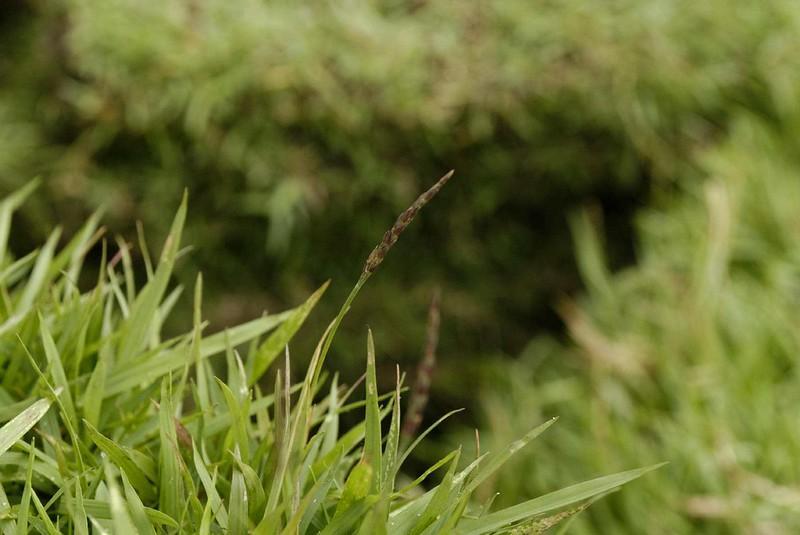
Zoysia grass thrives in warm weather but also performs admirably in cold weather.
Zoysia grass is known for its resilience since it can withstand high temperatures, dry conditions, considerable foot traffic, and many other stresses really well. However, if Zoysia grass is the right choice for you will depend on where you reside, what you want from your lawn, and how you plan to use it.
Zoysia is a warm-season perennial turf grass that spreads via rhizomes and stolons. This lush turf is distinguished by its stiff leaf blades. It tolerates cold better than some other warm-season grasses; thus, it can be used in transition zones as well. The dense growth pattern of a Zoysia grass lawn makes it very resistant to weeds.
Zoysia grass, however, turns brown after the first heavy frost and then resumes its growth once the soil temperatures reach 70 degrees Fahrenheit.
Some other features of Zoysia grass are listed below.
| Common Name | Zoysia grass |
| Scientific Name | Zoysia spp, |
| Family | Poaceae |
| Native Area | Korea |
| Planting Season | At the end of winter or the beginning of autumn. |
| Plant Type | Perennial |
| Hardiness Zones | USDA 5, 6, 7, 8, 9, 10, and 11. |
| Mature Size | 4 to 6 inches |
| Mowing Height | 1 to 2.5 inches |
| Grass Color | Lush green in season; Brown or tan when dormant |
| Grass Texture | Both fine & coarse textured variants are available |
| Sun Exposure | Full (6 to 8 hours per day) |
| Soil Type | Well-drained |
| Soil pH | Acidic, neutral |
| Drought Tolerance | Good |
| Weed Tolerance | Good |
| Disease Resistance | Good |
| Traffic Tolerance | Exceptional |
| Water Requirement | Low |
| Fertilizer Requirement | Low |
| Shade Tolerance | Moderate |
Related: Endophytes 101: The Friendly Fungi In Your Turfgrass | A Beginner’s Guide
How To Grow Zoysia Grass From Seed?
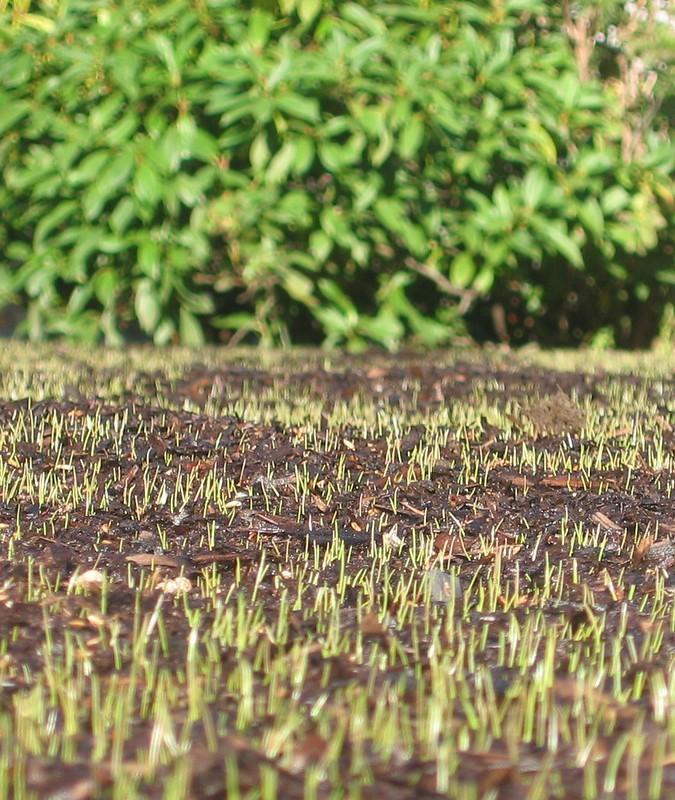
Most Zoysia grass cultivars grow slowly and are established by sodding or plugging.
The best way to establish a lawn is by sodding Zoysia grass because it will give you a yard right away. Moreover, when you sod an area, you can help control the weed growth that otherwise would appear in the gaps between the plugs.
Nevertheless, you can also establish a Zoysia grass lawn with grass seeds. This should be done in the spring, opposite to when you would plant cool-season grasses.
It may take a newly seeded Zoysia lawn up to two growing seasons to develop a thick and dense turf. Here is how to plant a Zoysia grass lawn with grass seeds:
- When cultivating bare soil, give it a light raking.
- Spread the seed across the area using your spreader in accordance with the instructions provided on the seed packaging.
- To successfully overseed an already established lawn, aerate the soil at least three inches deep and then broadcast seed onto the bare ground.
- The seedbed needs to be kept consistently moist for at least a month, so be sure to water it several times a day during that time.
Basic Zoysia Grass Care
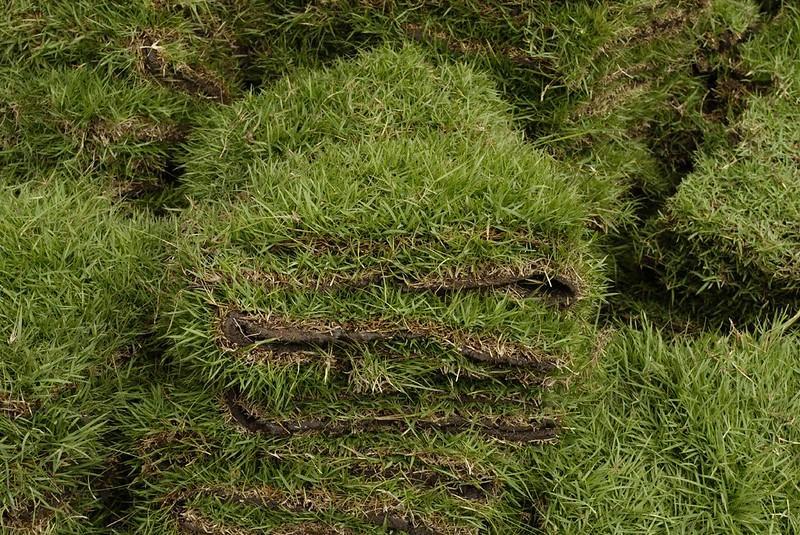
Since Zoysia has a naturally extensive root system, it can effectively store water and endure dry spells.
Zoysia grass is indigenous to Asia, although it has been cultivated in the United States since at least 1895, which is roughly concurrent with the introduction of the first lawns in the region. Zoysia is a perennial plant, which means that it will return year after year if it is planted in the perfect environment. It begins to grow actively when the weather warms up in late spring and reaches its peak over the summer.
The dense turf created by Zoysia grass is often used in parks, golf courses, and other areas with high foot traffic. If you do decide to plant Zoysia grass in your yard, the following is some information that will help you in getting the most out of it:
Fertilizer
Zoysia grass needs two to four pounds of nitrogen for every thousand square feet of lawn. However, clay-based soils require less nitrogen. Resist the temptation to over-fertilize your yard, as doing so will lead to the rapid accumulation of thatch.
Thatch is a dense layer of decaying roots and stems that can be found underneath living grass. Also, have a soil test done so you are aware of the specific nutrients your soil needs before applying fertilizer. Soil testing labs comprehensively study soil composition, including % organic matter, major and minor nutrients, and pH level.
The findings of a soil test can be used to cut back on excessive fertilization. The soil testing services are typically offered by the cooperative extension office in your area.
Humidity & Temperature
Zoysia grass thrives in hot and humid climates. It usually grows best in warm to hot conditions, with temperatures exceeding 80 degrees Fahrenheit.
However, as soon as the first frost strikes, its growth will come to a halt, turning brown and remaining inactive throughout the winter. Also, keep in mind that in cooler climates, Zoysia grass is the first to turn brown and the last to turn green.
Water
Although it can survive in dry conditions, Zoysia grows most successfully when given an inch of water every seven days. Keep in mind that deep but infrequent watering will encourage the development of a robust root system that allows the grass to withstand drought better.
If your soil is compacted or consists primarily of clay, adjust the amount of water in your irrigation system so that it leans toward the dry side.
Also, if you water the grass first thing in the morning, it will have more time to dry out, which will help protect it from fungal diseases which thrive in moist conditions.
Soil
Zoysia grass is helpful because it can thrive in a wide and varied range of soil types.
Even highly acidic soils are not a problem; however, if the pH of the soil is lower than 6.0, you may need to add lime to the soil to get the best out of your Zoysia lawn.
Also, make sure that your grass has good drainage. It will assist Zoysia in developing a deep root system, which will increase its drought tolerance.
Light
For Zoysia grass to continue to produce a plush and dense carpet on your lawn, it needs to be planted in areas that receive full sun. The grass will become thinner as the shade increases, allowing weeds to develop and start competing, further adding to the stress that the grass is under and making the turf thin overall.
Related: Brown Spots In The Grass: Causes, Solutions & Prevention | A Comprehensive Guide
Zoysia Grass Species

Zoysia tenuifolia is a low-growing grass and a favorite of no-mow lawn enthusiasts.
When they are correctly grown and cared for, Zoysia grasses can provide outstanding turf. Numerous kinds and cultivars of Zoysia grass are available, and these grasses can be used in various settings across various landscapes.
Zoysia tenuifolia
This Zoysia grass grows in a clump-forming manner, which will create a rather puffy appearance. It is less resistant to the cold than other Zoysia grass species, which means it would be better suited to the plains along South Carolina’s coast.
The sluggish growth rate and puffy appearance of Zoysia tenuifolia make it ideal for use as a focal point plant in Asian-themed gardens.
Zoysia matrella
This particular kind of Zoysia grass is frequently referred to as Manila grass since it was brought to the United States from Manila in the early 1900s.
Its leaf texture is coarser than Zoysia japonica (mentioned below), has a weaker tolerance for the cold, and grows more slowly than Zoysia japonica.
It is often used in locations where turf of excellent quality and low care needs is needed.
Zoysia japonica
Commonly known as Japanese or Korean lawn grass, this particular species arrived in the United States in the late 1800s and has since been widely distributed throughout the country.
The leaves of this grass feel similar to that of coarse sandpaper and are colored a pale green. This species is frequently planted in lawns and other types of turf areas.
Zoysia Grass Cultivars
The majority of lawns that are cultivated with Zoysia grass are grown with one of the cultivars that are derived from the species Zoysia japonica.
There are two principal groups within this species, the Emerald Family and the Meyer Family, both of which have distinctively different leaf textures.
The leaves of the Emerald family are smoother than those of the Meyer family, which are a bit more gritty. Here are some of their most popular cultivars:
Cultivars Of Fine-textured Zoysia Grass
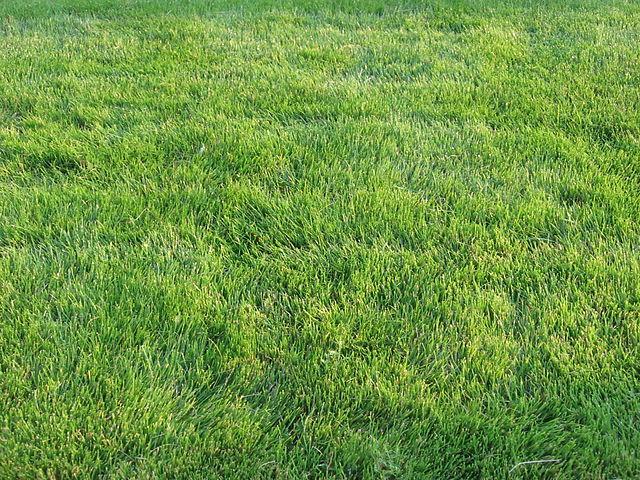
Showpiece lawns, where first impressions are paramount, are perfect for Emerald Zoysia.
Emerald Zoysia Grass
A hybrid with a more delicate texture, Emerald Zoysia grass is thought to be the most visually appealing variety of Zoysia. It works particularly well for high-quality lawns that are cared for by experienced lawn care professionals. Meyer Zoysia (described below) is more winter hardy than Emerald Zoysia. However, Emerald Zoysia can tolerate more shadow.
It has a low growth habit, excellent shoot density, a dark green hue, and very finely textured leaves. It is also shade tolerant and has a dark green tint.
Cashmere Zoysia Grass
The appearance and texture of Cashmere Zoysia grass are comparable to that of Emerald Zoysia grass, but it is not as bristly to the touch. It has an excellent shade tolerance but does not tolerate cold well. It is best suited to the coastal regions of the South of South Carolina.
Geo Zoysia Grass
Fine-bladed and dark green, Geo Zoysia grass is a popular lawn choice. The grass has a very gentle texture, and it can be cut to a height of one inch when using a reel mower or two inches when using a rotary mower. In addition to being used for residential lawns, it is also used on athletic fields and golf courses. It can tolerate shade exceptionally well.
Leisure Time Zoysia Grass
The Leisure Time variety of Zoysia grass is a relatively new cultivar that has been bred to resist the adverse effects of shade, heat, cold, and drought. It has a texture that is between fine and medium, and its color is a deep green.
Royal Zoysia Grass
When compared to other types of Zoysia grass, royal Zoysia is distinguished by its delicate texture, high rhizome and tiller density, rapid regrowth and recovery from damage, and excellent salt tolerance and shade tolerance. Even though it can be mowed as high as three inches, Royal will withstand lesser cutting heights all the way down to half an inch.
In general, it has considerable winter hardiness and is appropriate for use on lawns at homes, as well as on sports fields, fairways, and tee boxes.
Zeon Zoysia Grass
Another variety of Zoysia grass with a fine texture, Zeon Zoysia grass, produces a dense, dark-green lawn. Zeon Zoysia grass also has a high tolerance for dry and wet growing environments and a high tolerance for shade.
Cultivars Of Coarse-Textured Zoysia Grass
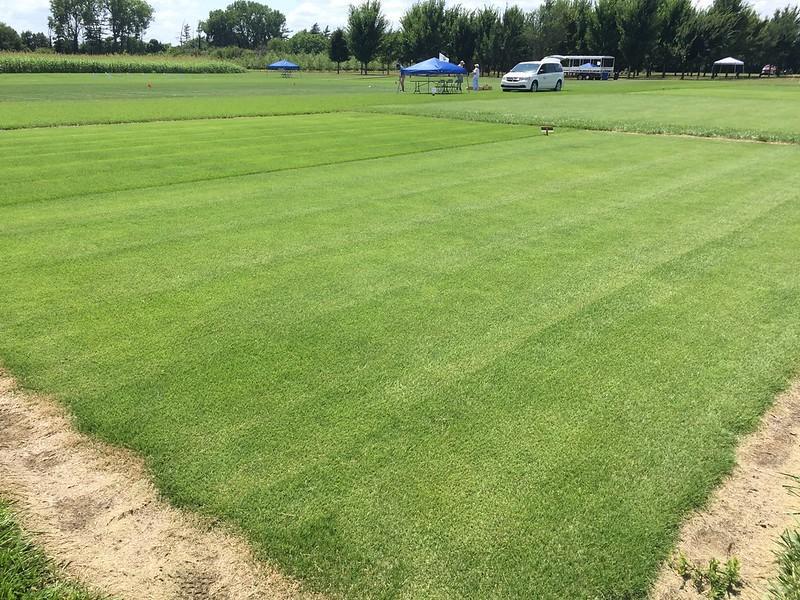
Meyer Zoysia, often known as Z-52, is a popular medium-bladed Zoysia grass in the South.
Compadre Zoysia Grass
Because of its resistance to wear, compadre Zoysia grass is a good choice for use on sports fields and parks. Compadre is a type of grass that thrives in coastal environments due to its improved resistance to the effects of salt.
Also, in the warmer parts of the country, Compadre can tolerate a fair amount of shade, but it needs more sun in the cooler parts of the country.
Zenith Zoysia Grass
Seeds of Zenith Zoysia grass, with a medium-coarse leaf texture, are readily available. Planting time for Zenith ranges from late spring to early summer, and the seeding rate varies from one to two pounds of seed per one thousand square feet.
If you want your Zenith Zoysia grass seed to germinate well, you should softly water the newly planted lawn three or four times a day and keep it moist.
Palisades Zoysia Grass
Palisades are well-suited for locations that receive from full sun to light shade.
The leaves of the Palisades Zoysia have a texture that is between medium and coarse and has an upright growth habit. Because of its upright growth can be mowed at heights ranging from 3 inches down to 1/2 of an inch. This cultivar’s vigorous rhizomes will enable it to flourish in the diverse types of soil found across the state of South Carolina.
Innovation Zoysia Grass
A turfgrass with medium-coarse blades and an emerald color, innovation Zoysia grass has an emerald hue. It is utilized for home lawns, sports grounds, and golf courses.
It is not picky about the soil it is grown on and can tolerate moderate shade.
With a reel mower, you can cut it as short as half an inch, and with a rotary mower, you can cut it as long as two inches.
JaMur Zoysia Grass
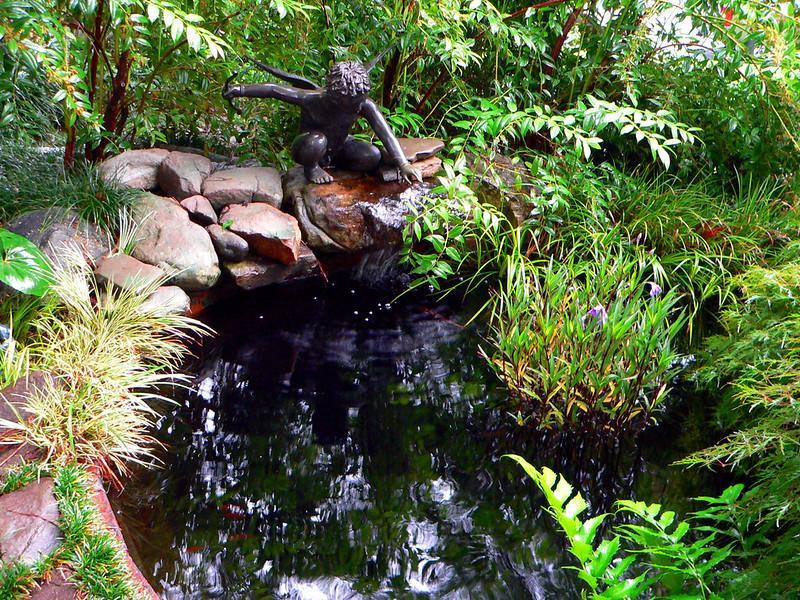
You can’t go wrong with this cultivar if you want a Zoysia grass for shade.
JaMur is a Zoysia grass with a medium-coarse texture that does well in domestic lawn settings. It has an alluring shade of green and can be cut short with relative ease with a rotary mower. Furthermore, it does exceptionally well in partial shade.
Empire Zoysia Grass
The Empire cultivar of Zoysia grass has medium-coarse blades and a velvety texture when brushed across. It possesses exceptional drought tolerance, strong heat tolerance, and good cold hardiness. It’s an excellent residential turfgrass and tolerates shade well.
Empire Zoysia grass also has outstanding tolerance to diseases and insects like chinch bugs and superior disease resistance. This cultivar can be cut with a reel mower to a height of an inch or with a rotary mower to a height of two inches.
El Toro Zoysia Grass
El Toro is a recent variety of Zoysia grass developed in California. It is similar in appearance to Meyer (described below). Compared to Meyer Zoysia grass, this one grows faster, can be mowed with a rotary mower, and creates less thatch.
According to research, El Toro has an earlier spring green-up and higher shade tolerance than other Zoysia grass varieties. Additionally, it has enhanced resistance to cold temperatures and a better color throughout the colder seasons.
Belaire Zoysia Grass
The enhanced Zoysia japonica cultivar Belaire is known for its medium green hue and high cold tolerance. In comparison to Meyer, it establishes itself more quickly and has a coarser texture to its leaves. However, it is quite prone to contracting the giant patch disease.
Meyer Zoysia Grass
Meyer Zoysia grass, or Z-52, is a superior variety of Zoysia japonica. It can withstand low temperatures well, has a coarse to medium leaf texture, and spreads more quickly than other Zoysia grass varieties. Newspapers and publications frequently refer to this Zoysia as “super grass.” It is, however, prone to nematode damage.
Related: What To Do With Grass Clippings | 10 Smart Ways To Recycle Grass Clippings
Zoysia Grass Lawn Care Schedule
In the late spring and early summer, when temperatures are at their highest, Zoysia grass experiences its maximum growth rate, as other warm-season grasses. When lower fall temperatures arrive, zoysia grass begins to halt down and finally settles into a dormant state.
You also reduce the frequency with which you tend to your lawn. If you want your yard to flourish, it’s important to consider the seasons when making decisions. A simple rule of thumb for when to tend to lawn upkeep is when grass is actively growing.
This lawn care schedule will guide you in developing a thick, healthy Zoysia grass lawn.
January Through April
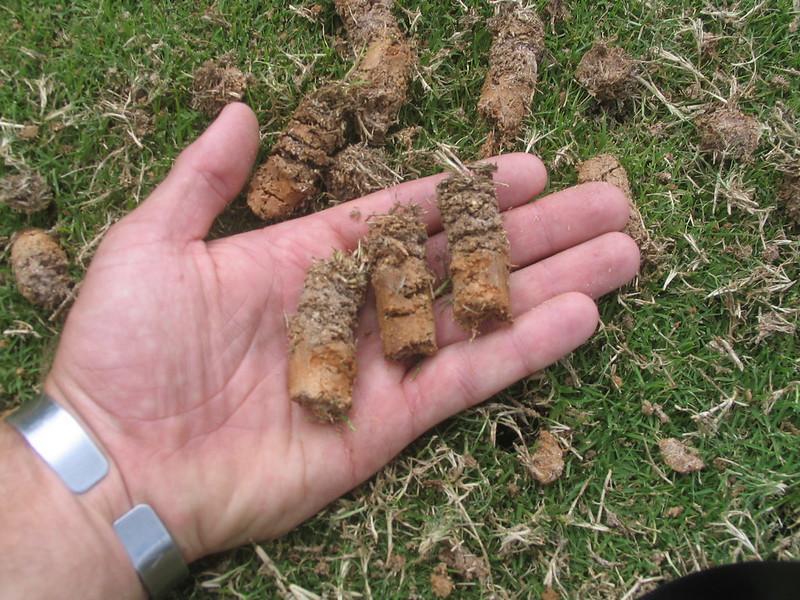
Lawn aerification and dethatching after a frost has passed can reduce soil compaction.
Here is how to take care of your Zoysia grass lawn from January to April:
Watering
All through dormancy, water the grass to avoid dehydration. Preventing drought stress can stop winter turf loss. So, water the grass if no quantifiable rain falls for 3 to 4 weeks.
This is crucial if warm, sunny days precede low-20s or colder days. The added soil moisture will keep turf growing points warmer, preventing crown death.
Fertilization
Fertilize Zoysia grass based on soil test results, and January through April is an excellent time to test. Nitrogen fertilizers shouldn’t be applied during this time unless the lawn is on the coast and frost isn’t expected. Early spring fertilization can damage the yard if a late frost follows.
Insect Control
Cold winters keep Zoysia grass insect-free. However, in late spring, look for mole cricket activity. Apply an insecticide if mole cricket damage is excessive.
If the injury is negligible, wait to apply insecticide. It is because cool soil temperatures and low insect activity make this a bad time to apply insecticide.
However, in some cases, early warming can boost mole cricket activity. During this period, insecticide treatments can reduce heavy populations.
If grubs were an issue in previous years, cut and peel back a square foot of sod. Use an insecticide labeled for grub control if more than six are found under the sod.
Weed Control
Pre-emergent herbicides control sandspurs, crabgrass, goosegrass, and other annual summer weeds. Estimated times for the emergence are mid-February in coastal, central, and piedmont/mountain areas and mid-March elsewhere.
A 2nd application is needed 8 to 10 weeks after the first for season-long weed control. Apply post-emergent herbicide to control cold weather and grassy and broadleaf weeds. Post-emergent herbicides should not be applied during spring green-up.
If warmer temperatures cause a weed problem and the grass has started to green, wait until the grass is fully green to apply a post-emergent herbicide.
Meanwhile, hand-weed and bag. Zoysia lawn is susceptible to some herbicides during hot summer. So, use herbicides with caution and according to label instructions.
Aeration
After the threat of frost has passed, lawn aerification and dethatching can relieve soil compaction. Core aeration involves punching small holes in the turf and soil to relieve compaction and allow air to reach the roots.
This fixes infiltration and drainage issues. However, if a pre-emergent herbicide was applied, delay any activities that disturb the soil until just before the next application.
Thatch Removal
Dethatchers or vertical mowers can remove thatch. This turfgrass species produces a thick thatch layer, so thicker thatch is acceptable. However, when Zoysia grass thatch is over 1 inch, dethatch. Use a dethatcher with 2- or 3-inch blade spacing and 14-inch depth. A 1-inch-spaced power rake can cause severe turf damage.
Mowing
Mow the lawn 1 1/2 to 2 inches lower than usual. However, keep in mind that setting the mower too low can scalp the lawn. Also, do this before the lawn greens. If possible, use a bagger to collect clippings and remove dead winter material.
You can also hand-rake the lawn to remove dead leaves.
The date of the first turf green-up varies. In coastal and southern South Carolina, this occurs in April; inland, it may be mid-May. Also, remember that late-season frosts can burn back Zoysia grass several times during the winter or spring.
May Through August

The turf grass should be irrigated “deeply and infrequently.”
Here is how to take care of your Zoysia grass lawn from May to August:
Weed Control
Many weeds can be prevented by applying a pre-emergent herbicide in the late winter or early spring that is labeled as selective for annual grasses and broad-leaved weeds.
If a pre-emergent herbicide isn’t used, post-emergent herbicides will be needed. Apply herbicides only when temperatures are below 90°F.
As turf emerges from winter dormancy, use herbicides cautiously.
Don’t mow three days before or within a week of herbicide application. Always apply herbicides to actively growing turfgrass and weeds to reduce the risk of turfgrass injury.
Disease Control
Brown patches and dollar spots are common Zoysia grass diseases. Warm, wet weather causes brown patches and dollar spot disease. Dollar spot and brown patch diseased turf are 2 to 6 inches wide, but large patches can be several feet wide.
If the dying area’s turf appears smoky brown and rotted, a fungicide must be applied.
Proper water management and thatch control are also needed to reduce brown patches and dollar spots. Fertilize and water the Zoysia grass lawn less to minimize disease.
Insect Control
Summer pests may attack Zoysiagrass. Mole crickets, grubs, and nematodes can all cause damage to Zoysia grass. Each pest problem is managed using cultural and chemical controls. Exceptions exist. Midsummer is when crickets and grubs hatch.
Even if no damage has occurred, an insecticide application on nymphs is the most effective. Insecticides can be applied in the middle of July to get rid of the immature stages of these pests if they were a problem earlier in the season.
Moreover, it’s essential to identify the pest and choose the suitable insecticide correctly.
Watering
Water for drought prevention. Assess the lawn’s irrigation needs regularly and water it the following day when the entire yard looks dry. When the lawn is thirsty, water again.
As the grass dries, it turns bluish. Late-night lawn walks are another option to see if your lawn needs water. If footprint grass blades rebound, the turf is moist.
If footprint grass doesn’t recover, water the following day. The irrigation interval varies by site and soil type. Irrigate turfgrass “deeply and infrequently.”
Fertilization
This is the best time to fertilize your grass. Always add fertilizer based on a soil test. Zoysia Grass lawns need 2 to 4 pounds of nitrogen per 1000 square feet per season.
Use the higher rate on Zoysia grass lawns grown in sandy soils and the lower rate in clay soils. It is also a great time to adjust the pH of the soil by adding lime or sulfur.
Zoysia grass prefers a pH of 6 to 6.5. A higher pH can be lowered with sulfur.
Whereas a lower pH can be easily fixed by adding lime.
Early Summer Fertilization: After the lawn has fully greened up in May, apply 1/2 to 1 pound of nitrogen per 1,000 square feet. Also, see the fertilizer calculations section to determine how much fertilizer you should use.
Mid-Summer Fertilization: Depending on the soil type, apply 1/2 to 1 pound of nitrogen per 1,000 square feet of lawn starting in June or July using a 15-0-15 N-P-K ratio fertilizer. Soil tests will help you determine if your lawn also needs phosphorus.
Late Summer Fertilization: Apply 1/2 to 1 pound of nitrogen per 1,000 square feet before August 15 using a high-potassium fertilizer, such as 15-0-15. When grass enters dormancy, the soil needs potassium. Potassium boosts disease resistance and cold hardiness.
Mowing
The perfect cutting grass height for Zoysia grass varieties varies by site and management. Growers recommend mowing Zoysia grass at 1.5 inches. In part shade, mow Zoysia grass 2-2.5 inches. With Zoysiagrass, a reel mower gives better results at heights below 1 inch.
During extreme heat or drought, raise the mowing height. Use a mulching mower to leave clippings on the lawn to decompose. Every month, sharpen the mower blade.
September through December
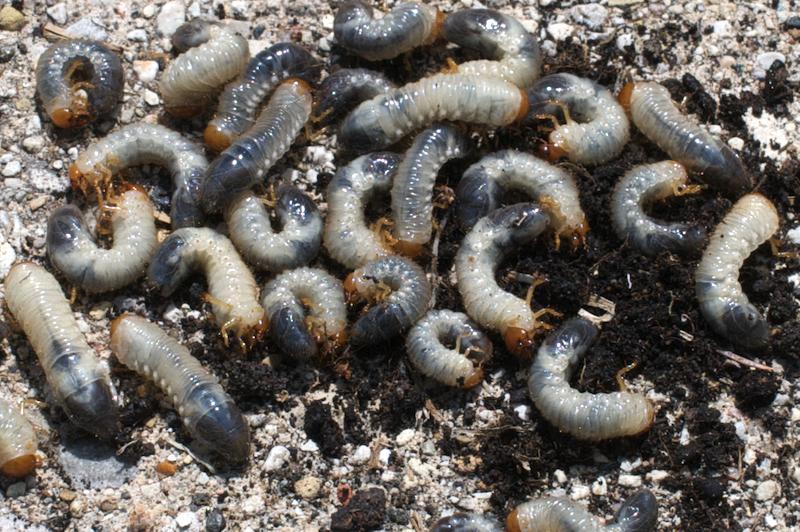
Any insects that went undiscovered as nymphs this summer can now do damage.
Here is how to take care of your Zoysia grass lawn from September to December:
Weed Control
Many weeds in this time can be handled by utilizing a pre-emergent herbicide in September and again 8 to 10 weeks later. Use the product according to the label’s instructions.
After applying granular herbicides, water the soil.
Disease Control
Fall fungicide treatments are crucial for brown patch disease control in Zoysia grass lawns. Warm temperatures and excessive rainfall in September can spread diseases quickly.
That is why fall-weakened turf will recover slowly in the spring, so fungicides must be applied before the Zoysia grass lawn goes dormant.
Insect Control
Any insects that went undetected throughout the summer while they were still nymphs will now be large enough to cause significant damage. Reduce the insect population with an insecticide to stop additional turf damage. It’s ideal for getting this done before the first frost.
Watering
Continue watering in the absence of rain to avoid drought stress on the turf. As the grass enters its dormant phase, water it as needed to keep it from drying out completely. This is especially crucial if days are expected to be in the low 20s.
Fertilization
Nitrogen should not be applied at this time. Soil tests may recommend adding lime or sulfur. Potash can be used to improve cold resilience if a soil test shows insufficient levels.
Zoysia Grass Pros & Cons
In this final section of the blog post, let’s take a look at Zoysia grass’s pros and cons:
Advantages Of Zoysia Grass
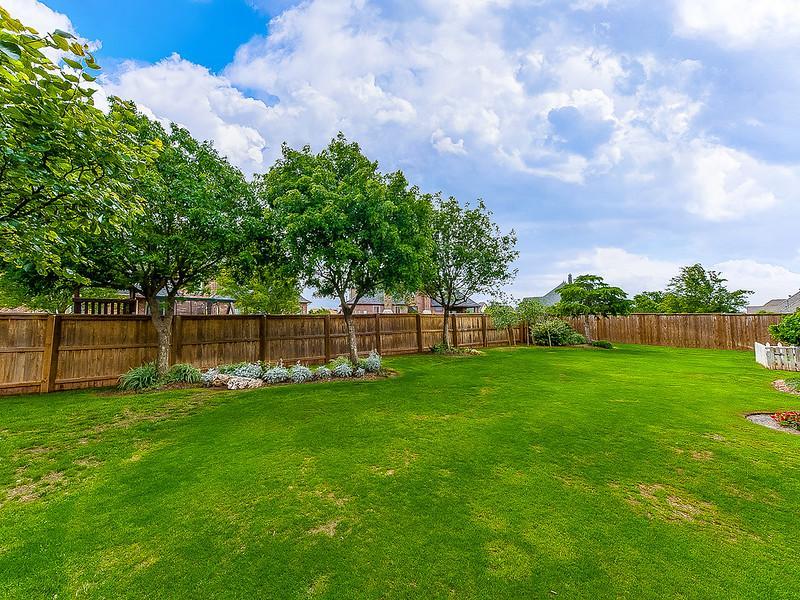
In its mature stage, zoysia grass hardly requires any maintenance.
Originally from Asia, zoysia grass was introduced to the United States in the early 20th century and quickly became a popular choice for lawns and golf courses across the country.
It can withstand the constant use of energetic kids and pets and thrive in various climates. With all of its positive qualities, Zoysia is a grass that can’t be ignored when selecting turf for a lawn. Listed below are some of zoysia grass’s primary advantages.
Remains Green in Drought
The heat of June is too much for the grasses that generally thrive in the chilly winters.
And zoysia grass can accomplish both! Grass can be kept green during even the hottest summer days by watering deeply but less frequently and fertilizing with 1 pound of nitrogen per 1,000 square feet.
Low Maintenance
Once established, zoysia grass has a highly dense turf due to the sluggish growth of its stolons. This thick cover is excellent for preventing weeds from sprouting and retaining water.
The fast growth of the deep roots allows them to access underground aquifers. So, when zoysia grass reaches its full height, very little care is required.
Traffic Tolerance
The arrival of summer means the first time you can use your yard all year. However, sprinting and sports can destroy grass that is already stressed by the heat.
Zoysia grass, fortunately, can handle intensive use throughout the summer. This turf can quickly recover from heavy foot traffic with just a few deep waterings every few weeks.
Drought Resistant
Warm-season grasses can usually withstand dry conditions during the summer. And Zoysia grass goes even further by staying green during the extreme heat spells.
This grass requires only half an inch of precipitation per week to survive, and it will continue to look healthy and verdant with as little as an inch of water.
Cold Tolerance
Zoysia is a warm-season grass with a solid reputation for thriving in hot conditions. However, this turf can withstand frost and snow without any problems, making it a great alternative to traditional summer grasses. It can recover from early season frosts and remain green later into the fall thanks to its cold resistance.
Disadvantages Of Zoysia Grass
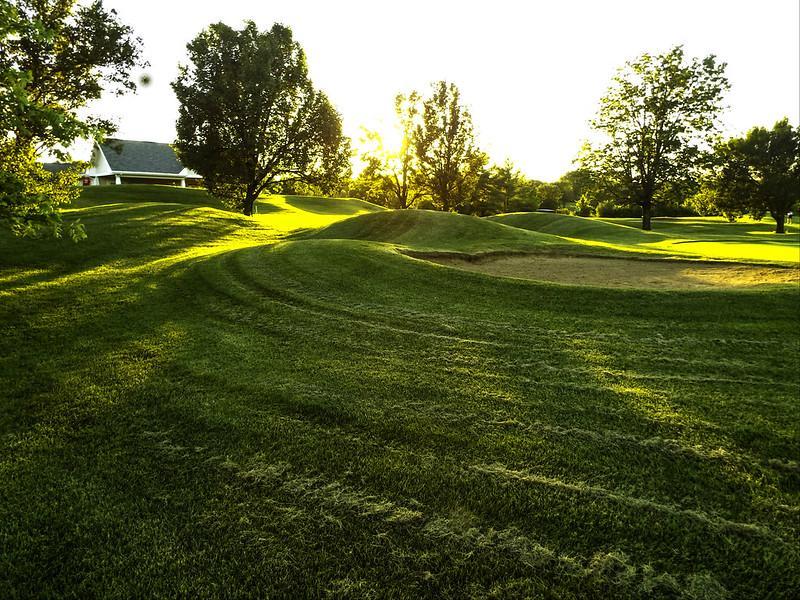
Zoysia is a tough grass, and mowing it might dull mower blades.
It’s essential to consider the pros and disadvantages of every type of grass before deciding whether or not to use it, and the zoysia drawbacks may prevent you from using it.
The cons of zoysia grass may exceed the benefits. So, check out all of the grass’ downsides below to be sure it’s the greatest turf for your lawn.
Thatch
Thatch is a dense, dark brown or black covering of plant detritus that sits between the ground and the grass. And, Zoysia grass is known for producing a thick layer of thatch.
If the thatch layer is more than two-thirds of an inch thick, neither water nor fertilizer nor insecticides will be able to reach the soil underneath.
Difficult To Remove
Zoysia grass requires a lifetime commitment and is extremely difficult to eradicate once it has grown established. However, in higher temperatures, zoysia grass has fewer difficulties and provides a higher return on investment.
Slow Growing
Zoysia grass grows very, VERY slowly. So, while it is true that you won’t have to cut zoysia grass as frequently as other species of grass. However, that also means your lawn will have more difficulty recovering from damage and excessive use.
Very Invasive
Zoysia grass will dominate the lawn to the exclusion of any other plant. It will start in the grass, spread to other parts of your yard, such as the floral beds and greenhouses, and eventually take over your entire lawn.
Hard On Mower Blades
Strong zoysia grass stolons create a dense carpet of grass that retains moisture and smothers weeds. However, it also makes mowing hard.
And, mowing tough grass frequently might dull mower blades and require more lawn mower maintenance. These extra costs and hassles may mean switching grasses.
Final Thoughts
Soft, dense, and visually appealing, zoysia grass is an excellent choice for home turfgrass. With careful maintenance, Zoysia can withstand high temperatures, dry spells, and lots of foot activity. However, Zoysia grass is not for everyone.
For instance, it turns brown faster in winter than other warm-season grasses and is very slow to green up when spring arrives. Nevertheless, if you are looking for low-maintenance grass, you cannot go wrong with Zoysia.
Frequently Asked Questions
Is Bermuda better than Zoysia?
While both Zoysia and Bermuda can handle some foot traffic, the Bermuda grass is more robust and can stand up to more frequent use by people and animals, such as children playing on it. However, Zoysia, despite being hardy, might not be able to handle heavy traffic.
When should I plant Zoysia grass?
Plant zoysia grass in the late spring (after all frost danger has passed) or early summer for the most outstanding results. Optimal growing conditions include mid-70s temperatures day in and day out. It is best to plant Zoysia at least 60 days before the first fall frost.
Is St. Augustine or Zoysia better?
When grown in the correct climate, Zoysia is a low-maintenance alternative to St. Augustine. However, St. Augustine grass typically wins out since it requires less work on the homeowner’s part in mowing, fertilizing, and disease care than Zoysia grass does.
Can I mix Bermuda grass with zoysia grass?
You can combine Zoysia and Bermuda grass. Still, you should probably avoid doing it. The zoysia grass may begin to overtake the Bermuda grass within one to two growing seasons, depending on the variety of zoysia grass you are planting.
Will zoysia grass choke out weeds?
Zoysia is an excellent choice due to the fact that it grows in a variety of ways. It grows wider than it does tall by sending out “stolons,” or runners. This is why it can replace existing grass and easily choke out most summer weeds.
Sources For Further Reading
Zoysiagrass. (2022). Retrieved September 29, 2022, from https://hgic.clemson.edu/factsheet/zoysiagrass/
Zoysiagrass. (2022). Retrieved September 29, 2022, from https://hgic.clemson.edu/factsheet/zoysiagrass/
Planting and Maintaining a Zoysia Lawn. (2022). Retrieved September 29, 2022, from https://extension.umd.edu/resource/planting-and-maintaining-zoysia-lawn
Editor’s Recommendations
Can I Use Care Oil In My Lawn Mower? Mystery Solved!!!







